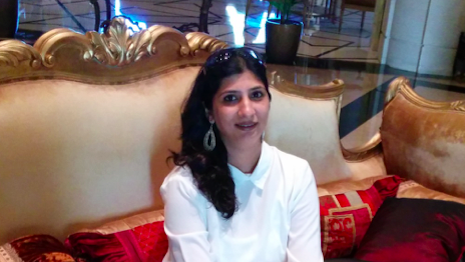By Sheetal Jain
Baby boomers have traditionally been the major spenders on luxury goods worldwide. However, Generations Y and Z currently propel 85 percent of luxury growth, per a recent Bain & Company report.
Indeed, new-age buyers are taking the truncheon from boomers and disrupting the rules of the luxury business.
With the democratization of luxury and shifts in power and consumer preferences, the meaning of luxury is being redefined. This major shift is driving luxury companies to restructure their strategies to suit the particular preferences of new-generation buyers.
Brands need to understand the Gen Y, or millennial, state of mind and develop an innovative approach to entice millennial shoppers.
As these new luxury buyers are young, more progressive, more discerning, less wealthy and less loyal, it may provide a huge challenge as well as a great opportunity for luxury marketers. Therefore, let us take a closer look at these new norms of the luxury business and its implications for luxury brand marketers.
1. Shift from offline to online: We all know that the consumers’ shopping journey has seen a radical transformation in the last few years. The rise of Internet has led to the “ROPO” effect, which means “research online, purchase offline,” or vice versa.
According to a recent McKinsey report, one-fifth of luxury sales globally will take place online by 2025. Therefore, ecommerce should be taken as an opportunity rather than a threat.
A holistic, omnichannel approach should be implemented to provide a consistent, bespoke purchase experience to customers across all touch points, be it be offline or online, events, social media, advertising and public relations. The engagement and interaction with customers across these multiple channels should be seamless and in alignment with each other.
As around 80 percent of the sales are still expected to come from physical stores, it is noteworthy that bricks and mortar will not lose its purpose. This poses a bigger challenge for retailers to provide an immersive in-store shopping experience to consumers as they would only be willing to visit stores if some differentiated experience is provided to them.
Therefore, it is critical for retailers to adapt new technologies to create a convergence between online and offline platforms to empower shoppers’ journey.
2. Shift from possessions to experiences: A recent research reveals that at least three in four millennials prefers to pay money for an experience rather than a product. They would rather love to splurge on a lavish holiday or buy front-row tickets for a concert than spend on buying a car or home.
Therefore, marketers need to create a seamless consumer journey that permits them to buy tickets, attend the show and share the experience across social channels. They should find ways to add more value to consumer experiences.
3. Shift from ownership to shared economy: Is a $3,000 dress still a luxury product when you are renting it for a negligible price? Such questions certainly make the definition of luxury blur today.
But new luxury buyers are changing the rules of the game. There is a growing trend of pre-owned luxury goods. Why buy a designer dress when you can rent it?
Millennials with spending power are reluctant to spend on big-ticket items. They rather prefer to live in the moment than to own a product. They believe in the concept of a shared economy. This makes it critical for luxury marketers to remodel their conventional businesses to remain relevant for the new age buyers.
4. Shift from self-orientation to sustainable orientation: There is a visible shift from conspicuous buyers to considered buyers. Consumers now want to use brands that care for the environment. This makes it imperative for luxury brands to shift from a linear economic model to closed-loop circular model.
Marketers need to think not just of profits, but also be considerate about people and planet. Realizing the importance of this concept, many luxury firms are redefining their supply chain processes and striving to reduce social and ecological problems through the use of sustainable technologies.
5. Shift from sales assistant to virtual assistant: Technologies such as artificial intelligence, voice-controlled shopping and augmented reality are set to act as second sales assistant. Interactive chatbots, virtual trial rooms and personalized recommendations through applications are emerging as must-have tools to lure new-age buyers.
ALL THESE SHIFTS are certainly going to reshape the luxury landscape, thereby making it crucial for luxury marketers to rethink their brand strategies to remain relevant in this disruptive business environment.
Luxury buyers, particularly the millennials and Gen Z, want the brands they use to reflect their concerns and aspirations for a better world.
Through the use of technology and innovation, a wider range of sustainable options can be created for the new-age luxury consumers.
Dr. Sheetal Jain is founder/CEO of Luxe Analytics, Delhi, India. Reach her at [email protected].
{"ct":"2kl+fbBM0gon7xxnBU2FMdBGN40KRZm3\/aAy9OiDr4ejzq\/u\/W07Q4IgMhAlvvozao06IZNWN1pxoCpCay+W5zxMwPZ0FkMVDUhG4MmmnAoeAFCbqmT6embOVLUS6rsMIzO1rPHsQONLxAExFstS3MKOgoL4HGaXIthIT99PT+m8zCidgivX4E7mUl3aCR2NX\/u2EifFqMnMPPfwCCRkeTUi1ho+IToAD97sEEU9JD9BNlphpP++\/6lJg9LXeOer2RdIBxR6KIN9MB3YRIOXWgB1mcs\/dQxSGdnW009Pc7YTLmdrBIhDiS70KAPB7\/nt8y0KE3Hq0t\/jD27KZlYznBng2pUsRDGhQk7nKyMKWSKiFHttKP\/m+fzu9x+tyFWjJ1TX5EIGnCeDhxeCq1h1aX59XgmPsBX7IMB7POx0PD4yzQXcuqDsJ5SfTkxqCOOwuacKxotf1yM8wPZGnjiF\/jfh52NI1smUbcUyS6A6nstlcZ\/a1TGr0IBJusOKfIX+1Xx1oGgWTAkP9V3i0iD4z3COwD+RwWuRGEskaO9hUICVci7gLX\/GdiRE6cFOzEz7NPnZp007yN7U\/uWQ0nNSzs1VMRUzjeFWxtLFBXefnflTiHR3A9MK3uSsTAqzmwJSG3IBAZuQz5y773ohwrXGgCUXj0g1\/M0ziExusYJPCxVx57uKjd0gPKKrcUY\/+\/huW6igD8GdeofWuPkn\/JoZMauSYs6CIO\/pe6rrK7uV75cfymatOAzHv2ETT3w4YG2jEusAlwHYwvYDSOPOL3EIJkH1DLk83W7nuN0Xshi+MnP7qTPhmlsAMSutcVdgmV66XV6VC7nMdS2nZ0IaNqFLtZhw+wRG1\/BIUjwdGFH\/xrcHWiiQZt8VrnRq4qynaTXVZte8fBahqAjMs3FsxfQFtT5PnlXAcYEBCIKJRDcfMWAJimNB2UEDGVUHBKBF888BbK\/nBFpOA5nLfPmCox6s\/ShA1No0YxcBsSmCnNzUr+cbUwQZDrtXX+NsSZNFztE03XTyQQXqbsvN4+FfLk5nkFZG01kMGyozSuhvNhziHhQHu6Isx7nHqFc0Xamxkr5bwJ\/OzveFeZRYf8jut\/DIC2fKISelrkaud9GzPLp1ScBrgMGEFQqvPx87apm7lSCxDtoOAUJ6rAPc3\/HuYWpABh6jKEOwbfrAoLScVydXnKa3j7k1NkxZIg6U5RFQh3cWHxABUCC9gjt8\/pCy\/Rsynli7qdYY64\/D0jurDJmOPxZeaYhpNegCWM14alY7vbbe0\/yS3spfiacGDAylyS9U+C2KLtACgk2NaTrYdtxmayQ2aEEL0pQJejY8L1tVFCNlcvPKi4BC\/XzfFhmml+4INl+uIxBtczvYPzCtBavPSQm1YbjNURaYBMB90E+v0EYY9cWELDU+Fql6NmgWn7Qvn+3SnmTwpJcgdKaAqsEzlMUgugU4AF3Ag\/ZLdfu+gvuUwpY\/OS6xOA61AbfLAOEdK12BVxMYnZqi2ejtX1vaYCgiT\/kf\/Ul+ufqaf\/tuSm4mXrEHFrL2RN8hb0XGR6url9lP4J7964T13wq\/IsDM8Hk2Ajec\/RFdfNsinmSOgiOaGyO5P6g3on2GLNWImIynKLZwxgloVWz8yMoWDVIbpX994hQQwbRu+M\/\/B2lI3C\/FR7CmPsVaS\/OL7LvCy8Rf5CN+ZCbuahf14C8zlIHCQrDqUrqPCrCVEojmjCln2kS4somlKfxl0eL6Yo3TXvab8Rl8\/lK1Ins9cdI3wSEaebn2I2UAzN8U5YCfAwHAtEL5qlvcGiFVPTZ8c\/nV6VQ7SeXx1n+bG4rGhTHAt37\/7Lbv90mTyOavFJMwHkb7bjdHRYUsjuyAY4acdnVCehnXbOc8HJqo83+4AXjI5HJg7ZyMbnJoVnIg+i+7x0k8NY2fNNHztczQsOAygh0YD5M4dHb20fcWMc5QExraENMPRvn\/gqec18Q9MqZWmnSdsEcSiv8NY9XhGKrDXjmo9PwDYz0y5KpNbO1V2InsUcVp5\/PuWO\/zI8i+6HonREQ9o21DDIs+22PbAqa4+8BD1meabfIz0AoSfDvu20Hkf6cpQIq7jIYM0fqNwALGa5cxw9AA7TrYTrM2I4puYcqyMPM6sUBnZfNBFhIAwk0uVLRywyVT74LqSOh2w8mIf36OO+UeiVw1cN\/OZWmld8r5IJ1hutmFcqzSWCL414sG+KZD+QZVZFl379nPDA1Bp1963cRwELfGS6s7C4cEnrj64cmyUu\/\/fjSMZk4gxaGQgdRWtG45KIqWo2uw+EjIQ4NObReuvqFLF\/Ft4EorbPOlRn5r7v4iBdF4VbCztD53vKzQHaCG9rxQdqKMCVy4T5IYEmf\/dL6gRGs\/JcEMOcfBGt9XBQPyZnUoHHosxjZ23b+BWhAal7wgltZKj9pKfb7vwc32dErayJeRULr\/CDStJtyX2F\/9b1JS1hjQKo9RxWA\/j813KmlNoSzd+kzTGgkHxVQHyQLQQCBMdeHJiWw+GVQeSphNqfXI0aOji+eGcThQoXRF6DFyt1I73eBg8XvlEl6xGhHKtyJ\/lWCETyOG2GPK6eretpIPh4MpCKvIOtTVolQPW8TalXhCZTMAlEFAEUvPPbKwY1PixgPtvw6gP8mvxBsgPovou\/hei+bn8maUBBVzHP1\/xygfsVPz2+FJkGaz3uCvNxSK0wqfwf2fWHtpWoIyEcIXQQSx6gZxtq3HQ0Lo6gL4Rk95R54qFyiGv991SgNC8CwXbgtxFQBlAQaTSumLTJL\/0u4hbuJVIrF1opKpU0967wC5TDoWc9m1HFUQ3wBlQHsszWW+Sah9ygooUZ1CIv5YadM6K9GgAnk5k7F6GZx+qXO4VNcNOSvTuVFVHETpPL7FCSW+GaV8GqjT9LXOCe7tOpzvjQk1Kk0iEWyqVvRDXXJkM389BMWJcYLmOyezEkrc1wJdkQLD+bJanOP413dMYn32AscTl51Bb71Q8OphOq+OtIxjuPzn8KuVrADy\/Uhym42nEXf4FVNTgSMokFe4REPbl6b7bDiSj3qE+5172nWbxlKPTkt4bnW6q7xQbhzKQLGKtsfQOnBXSzL4oZnYq+cqPwyGvPjz7i86QuAVTMdhqOm4GvohXqSNpxiCmmBG+mTCrWzbhIjqVttPWJJZj9CzNYUZBo8F7\/x+NTP8zDrz474wEoKTxhV5uYqbYxu9ZAlWyNn9jrmfi3bwOOQwZCcqlc9Fk+zQzNh2IBaQauB24sVJHM+mvsiwlE4pXCareVdGnrcYbR\/yI5pZANlDfGYucNPxbzklZNBnsSlykeYErpmVCwh+QiZ0i5qFpGXtS0n8PzhB3THNk8F5uNB2cWco0UNp+fZ7VRM3PC5tfNK8hwff6qmOtWqE2npq4pDrhKCKnERV67Um\/7O5x2KODOOCWvbnXKeUxncilpEHix+EAyB0kn6hgp6ZaA8+1PpBaJIve09JqzIAyQZyzT1awl5am0AgOQAb9kHwN4o8jMv7TD1Zl0OXP+a2zKCaATEvcuP94KOYRhq6SQj3\/IN2sSoSyTbYnGsEmYSePY5fDGd7XDml0NfgFjMrq4H4MRLhMf\/rSRZFwZxJgmyeSqIWRWtlDebLRaNYVyfqQ8wbK\/LJyh475A\/54k+OeT0niEsj3xsxvo5iZmRwhw9REmDVT7BA9wKRa1oBYDNPQzYo7NergFWMEbCCgangaIW5+F9J1yWVJ+mQzSXTVDCEaF2Qtb\/WZMeTPNx3IK3IENeTlguSRrpQOwOQ1aMm\/h9o4utF0hNIFa7huGsvH24NNN7QK4hqXamc1LvkTc5mmn5JuQd9jG8oOwJqg2dAUcf1XsIXoxWOMVdSHkjnyNRhcAeAKGHO3CLUBlKYj1xOkljHPw6+xGw\/8co7XAQ6zTuxbWOR3lSuh2ZFhecCjsWiNCIUPg3kpL5QUbPmzpCmVgdcvyTybY4jKzzs8CWuseaJEE9l5Adm2Xc6IxTrZqmY7cJYT0y6RT9J5b9aDBGOPKJL7wmhjdBX1Saz\/Qs+a7xTiI6Sk9Ryy7Awz8iFt+waBVZTOk5s00ybz7MYw+dd5m5Hx+\/hYy3QR1GOJV0B8R2MqtiG5A8Hbjy2v83cFUZLXs6JaCak8LXWbgdWVqZD49WSBGBlMDI5n2buNRutUjc7rVT\/aWwKeKb2o8sGCh6O0wO2T6Q5gnrUxnZS5zG9bMb1SeM40+fU+w+sMKq\/qtYv2xZ779zBRmL31ikuvHp9RQX+CSORwGWRMXZTjVcFzIVnyLlEvIaPiZCaQotIYyLPnf42BXoW\/0XWZ9cAY101elr9jTwwsPA8YjQt6FW\/PBf5pUejul7jjac7LkR+4Li7osO3fU3UJBd9VRV9ScMEeFDX6TAfYPSjnHj+N5fKJqudrS3swjULldlGqEAxcK\/4oFFbpJvAsUrQkOYPBizd+IJotZm4\/edXp\/v6OQwp2qYsn+Fge2OiRFBdLIgA5+9F60bjXByooxTMIYLHbl5IDoXYi78Dssxg4iwXWVjQ0LCGNsY664BUdsL8dD6pDqMp+zQyotxNBBE\/dWuBflwT+vIw1BnrusFvdRdVynQI4EgfXaEbPmnBzlCVjdIGsz048wwsECROvGR955QXY\/MZBO4HIJrzXwEvAPGw1mr+ykRhwKsCJCZgsGSBnp16xz8K1ybxv69RxPlP2XlJdu\/xsF8X4RrXa7SDtxnrbhQTVoL+pMVIfTIIyaxKrCVp80RaEw3wbSTMmFFRqVN5Bm79mpgKjsy138VJIcdikDqhbGmAfnrLTbI9CmJ7ZA77gV6DjzVfTM4Zf1WNH1km24J7tiDJOVrIDdOQ19wn+j+AVP9CEUzYEIKl\/gkDYZB8s1SahlgbnXv5PM8cf\/608yM\/\/KCW3JRZ6SUgirAe+zyIyJUcK30Sz6EYEqPivZxaQUalKkE8yOy3xQKQUCakMrrT1RgrIIsKLht7yKc8dwiQKshXP842vAzcQ627z6CIkzJ2keTqJYF7awHogCU0dHqathZlqF+rWIn7+pZ7ZA4N+G16fYM+6yaQZNIl\/HuxauVMDFo8YrU3hMqEzGXHI+0Q\/uyeDhOkYgKwyN5UvaFY6iJSU3PC13vG7V+iah6eIVqeCEk4N8nY91IxQFyYqXS4GHVXb1dwDB5ItUipFbPLMG5A5cQuDOUKRi3EDIoIMaO4Q1zZeTQnDaL7jW+lY6FM69SUmk9LnLP00jlSrBeUiEU0P4B1cBmkPlQjGZMdBrxFsGQJypOdNHbmOXo9i2PLZmlddY8zegen7FxgDg1me+TwdoJXjooRVoZvsD1t9vSo\/p6JDeVxJFYBHGmdO+xvnegJKYLF7x9sbOjXStBtqPi\/NJ6FKtm3V43gZPRHlINokbvFo2imxKeJcebW7FqwVHoR9EhcK01qdscfNldg7N+4\/bOP4aDrZWMlAsgl\/G\/CxHIBft9ERvbbtyxAWRGG1VuHdmQsCht0sqAyXI1R4Bn24oDooz4Byz0YCGUXEB5jjD\/C76vLctfNwuX+yjc2+uNuqkaCnQPpJMAyWgfvOheAZfdV\/LgYpagagQcpoIe\/eHuV1+grp0MwLqtkk247p4SDZ2vfojIzEtxAy2yDUCvmxkfrIze\/aIidQB0ywoILHDThAbL0vCLKFKjOr3c5HiM+MFAzSLq27qFa9NPl\/WOV6NSHwI0PWkeWDM+CLJCXRZldLLArb8At710VENU0dtpoxnujL+c4Hz4m45M7aYPtdarPQkKIHmTJ+sn+GkEe2GEFhF7YKrMF7BFtvFiT8iTVeUrFzWkZ4\/qNKpQ7S4SGGWxPLVyp1wF+5+2YJgjfNASMYkgjPsPIzLSGKnD\/Y7EZQHIP2R98nNUj9r2yJNSjbNr0l18zumldicIWoJCrzfhoINhSfrVAfNrW+OlhgINvQ0WI+IfjBckt2NpnOsOAtJqUkPZ5F9Amehw3aYqH0FDww4i9ExcnHyjgvsKVeiLepCeqR8zDriLbF0CmQIgKXI70CKdKibRrHdopuvXu8cjtrvAiklbnlXJ9laNCU5WYVDHRet82p2UPJ3l\/7SWu52qNuTy8lKLqX9\/\/QrpdGUFeTwo+x+PFNt\/wk1JcM6Regk+bZapKwzVcX9wl4NvRUK0oMrFgb0rJbXYazckbLUafcDfIdrslwOb8jskpxQkcm+LnCAyFf3Rh9BIJSMLw5bVVMYNqE6GOdxWza\/YAZcrnL7JOlEj2TR2sSNvmx1Bl6UrBX1yfBHcGCte0Ya3hlWgXWjtBCxtBsMTpGfwuD5DVj9SOIrX\/1rqh6k+ebRWmG9oh\/qJE6hzK4wSlUF1VXa7wKjYmctyExKGV0G0qtSZBWv4SvfF67euUKiojgFHgOd6bpF8TMGtntjVOZMcbRPhFHPT8CRRD8aJ8Q8\/i4w+7wAnasw3+vsTHeGYitKU68JgrXCExEpqATEF6zw0+yRM\/LYY5dPLqAQcl1MkT+qpthSyXhR4d7X5EWbDoJzZnld45wfvfprug5WuI7UqNdAEjn38m\/CgP32xN1Dreoxw4nyOgVQkk4TjPheHzzQkpINurqWJkMXFjK1nfms\/\/vWI7vW2GNRCZDTWWaTt1WiU75IJcrroZoMtbJVVKq2McLzpZxy7s7OY8+oFOQJNRwD79qhSr2uc4CE8HpVHIHa6Ef+BC5XGQLqqKAdbm6ycdt2jY\/8MhcaRXdgQZ6vUmSW8P9MnNdBl0hbB1pUvmNG3K+JgIOKMwp3PYc8BS2zenTz+FvYu4qIDqxfMGSh8bx5O0uF3OicAW9VTcBSkCp\/+uwpanhomneaRDrbPELwDt+PHb24pNYyKCR\/FrLKY4r9sQtx\/N2sWFQzCHVMH\/zfZLeIXerIxIeCu05xvj9LVHIYA1LbT50gSVzYv+WrpU3Q9b7YVE5b55vVmL15QYyUA56KEfZPrrZS4iOSKhInpbRL7gn5iQa\/5wqljtuK5Jz6je2pY2ETq6dZ8vXwsbeg2ahtwENHkCrebn+bzW3D8DdvMpsEK4BMCx\/0OI27VRGjG41IGiajJBeMVng5LzKwfaY40uCRLuuKl3BI6G5wDhlicnPVTeXDVr4mKR5BP0INWCI9xNwPNKbVkfY\/\/Nr09Cr\/XTfTviNtRnN0WUIRX+Rn4j03t8vKi7zfE7w50A2z7fAYtfPX4Pw5E69XvtWsj4qI\/YzOs2gUOJDWfzhASBzkBRZZpWIGrjL9oaN\/Vx1KX0mYbQQj98BCsQ8z0l3dS9ovMmx0zlMKHWidltcWw7zbdik8+M1J77WkonD4jdoTaqtDN1N0zhijBuCvnTAyphgDia172ecxEPqXb1WrVlq6VmTrH1WTt2e2DNbV0RXpTYBzsQKnat3eAfKgWFc9xLa1bZWE\/NA0MJ7U1WNmWzsv2E765EChQpe1awEM3YCqtp3tiZHdS05+sNZi9GX8f829Az4EyoELe7p0C23rxdcyMI3QKlcxN9HYPWAnl9xN0Jryd5PbYWVw1tqDxh7wM51FdP8auz8qGpdSTuERkTJp9wHdLtObYj1WaYe66COgHkuNesP6455iaTM5xIqlyd+xtQOoWP7nxg\/TsnG8dJRpti2U0GpWByeO2VRfVRO74UdJrCYE49g4leezakNhj\/aOLAL9zuWUjEVkdYedJlx\/gBgCDWsQa\/61qgNdhUC+B4YgwFeV55swG80P8lZUtUXby\/hLYmnZQv8g==","iv":"96fd3dd56b61fbc3fdc9ea8a9661394b","s":"7091e5c96bd36ab5"}

 Sheetal Jain is founder/CEO of Luxe Analytics
Sheetal Jain is founder/CEO of Luxe Analytics